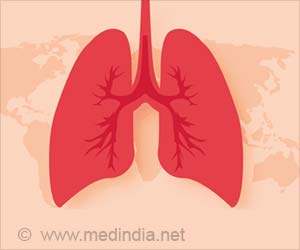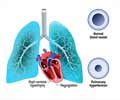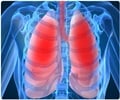The National Institute for Health and Care Excellence (NICE) UK has expanded current criteria for referral of chronic obstructive pulmonary disease (COPD) patients for lung volume reduction due to recent availability of new endobronchial valve treatment.
Highlights:
- The National Institute for Health and Care Excellence (NICE) UK has issued new guidelines to include which patients with chronic obstructive pulmonary disease (COPD) are suitable to be referred for lung volume reduction treatment with endobronchial valves
- The Zephyr endobronchial valve lung volume reduction treatment is a minimally invasive procedure is effective and suitable for patients who are unable to undergo invasive surgical treatments
- Following the treatment, the patients have significant relief of breathlessness and are able to be more active than previously
Read More..
Important Points in New NICE COPD Guidelines
- Recommendations issued following a detailed analysis of patient response to Zephyr endobronchial valve treatment by measuring parameters such as lung function, exercise capacity, quality of life, and survival
- Endobronchial valve treatment is minimally invasive and benefits patients who are unfit for more invasive surgical treatment
- More patients will be benefited by this and the referrals for lung volume reduction will increase following this treatment option
- Criteria for referral of COPD patients for lung volume reduction include patients who have quit smoking, undergone pulmonary rehabilitation, have less than 50 percent of expected lung function and can walk a minimum of 140 meters in six minutes and have breathlessness
- Treatment with Zephyr endobronchial valves is cost-effective in comparison to medical management of COPD
About Zephyr Valves and Endobronchial Lung Volume Reduction
- The Zephyr endobronchial valve is made by PulmonX a leader in lung interventional device technology. The endobronchial valve lung reduction procedure is a one-time process and minimally invasive with no need for any incisions or cuts.
- To treat COPD patients, a thin hollow flexible illuminated tube called bronchoscope is introduced which helps to visualize the inside of the airways and identify diseased areas.
- Through the bronchoscope about four tiny Zephyr valves are placed in the diseased portion of the lungs so that the trapped air escapes and the increased lung volume due to the trapped air (hyperinflation) reduces.
- Following the treatment patients report ease of breathing, improvement of breathlessness and ability to perform routine tasks which were earlier difficult.
- The endobronchial device was FDA approved in February 2018 following a speedy review process since its breakthrough technology offered COPD patients lung volume reduction and an improved quality of life without invasive surgery. This treatment is safer and more effective than current standard lung volume reducing treatments and cost-effective in comparison to medical treatments of COPD
- Since 2007, more than 15,000 patients worldwide have benefited from this procedure
About Chronic Obstructive Pulmonary Disease
Chronic obstructive pulmonary disease (COPD) or chronic obstructive lung disease is a lung disorder that is progressive and can be life-threatening. It includes emphysema and chronic bronchitis and affects more than 65 million people globally. According to reports, 3.2 million deaths were caused by the disease in 2015 (5% of all deaths globally).In emphysema, for example, the air becomes trapped in the air spaces resulting in their hyperinflation and preventing entry of fresh air into the lungs. As a result, the patient becomes severely short of breath and unable to perform normal routine activities, like walking, eating or even bathing.
Currently, there is no cure for emphysema. The symptoms can be managed with medicines initially and as the disease progresses and the patient does not respond to medical treatment, options include highly invasive treatments such as lung volume reduction surgery or lung transplantation.
Conclusion
In conclusion, the new endobronchial valve lung volume reduction treatment is a potential game changer in the treatment of COPD and will benefit thousands of patients who suffer from breathlessness and significantly improve their quality of life and survival.References:
- Chronic obstructive pulmonary disease in over 16s: diagnosis and management - (https://www.nice.org.uk/guidance/ng115/chapter/Recommendations#lung-surgery-and-lung-volume-reduction-procedures)
Source-Medindia
















